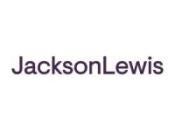On September 19, 2020, the Department of Health and Human Services (HHS) released guidance establishing the reporting requirements for health care providers that received Provider Relief Fund (PRF) payments. These reporting requirements apply to PRF recipients who received one or more payments exceeding $10,000 in the aggregate, but do not apply to the Nursing Home Infection Control distribution, the Rural Health Clinic Testing distribution, or to reimbursement from the Health Resources and Services Administration Uninsured Program. HHS has stated that the reporting portal shall be open starting January 15, 2021. A prior HHS notice established that a report of expenditures through December 31, 2020 is required no later than February 15, 2021, and, if necessary, a second and final report is due July 31, 2021.
As a condition of receiving funds through the PRF Program, recipients were required to agree that the funds would only be used to prevent, prepare for, and respond to coronavirus and shall reimburse the recipient only for health care-related expenses or lost revenues that are attributable to coronavirus. Recipients also agreed to comply with reporting requirements as specified by the Secretary of HHS in program instructions.
We summarize the key takeaways from the guidance below.
1. Calculation of Lost Revenue: HHS has significantly modified the calculation of “lost revenues” attributable to the COVID-19 emergency, defining “lost revenues” as a year-over-year change in net patient care operating income, which is equal to patient care revenue for the year minus patient care related expenses for the same year. This is in stark contrast with a previous FAQ issued by HHS, which provided that “lost revenues” means any revenue that a health care provider loses due to coronavirus, but did not incorporate expenses. PRF recipients who relied on this prior guidance will need to review and evaluate the effect of the modified definition of lost revenues on their use of PRF payments.
In addition, under the new guidance, the ability to use PRF funds for lost revenues is limited to a provider’s 2019 net gain from health care related sources. Recipient providers with smaller net gains from health care related sources, which typically would have lower operating reserves, may be adversely impacted by this limitation. However, if a provider has no net gain from health care related sources in 2019, PRF funds may be used to erase 2020 net losses.
Recipients who do not expend PRF funds in full by the end of calendar year 2020 will have an additional six (6) months in which to use remaining amounts towards expenses attributable to coronavirus but not reimbursed by other sources, or to apply towards lost revenues in an amount not to exceed the 2019 net gain.
As part of the calculation of lost revenues, recipient providers will be required to submit revenue information broken down by payer category, as well as information from other sources such as SBA/PPP loans, FEMA funds, CARES Act testing funds, local, state, and tribal government assistance, business insurance, or other federal and/or coronavirus assistance.
2. Reporting of Eligible Expenses: Recipient providers will report information about health care related expenses attributable to coronavirus, but only to the extent the expense is not reimbursed or obligated to be reimbursed by other sources. The reporting guidance indicates that the reported amount must be net of other reimbursed sources, including payments received from insurance and/or patients, and amounts received from federal, state, or local government.
The new guidance does not clearly limit the scope of which health care related expenses may be reported as attributable to coronavirus. Applicable expense reporting requirements differ according to the amount of PRF payments received. Recipients of between $10,000 and $499,999 in aggregated PRF payments will report health care related expenses attributable to coronavirus in two aggregated categories: (1) General and Administrative (G&A) expenses and (2) other health care related expenses.
Recipients who received $500,000 or more in PRF payments will provide more detailed information within the foregoing two categories. In the G&A category, such recipients must provide a breakdown of expenses in the following sub-categories: mortgage/rent, insurance, personnel, fringe benefits, new equipment or software lease payments, utilities/operations, and other general and administrative expenses. In the other health care related expenses category, recipients must provide a breakdown of expenses in the following sub-categories: supplies, equipment, information technology, facilities, and other health care related expenses.
3. Reporting Entity. The reporting guidance addresses which entity should submit the required reports. Consistent with other current HHS FAQs, recipients of Targeted PRF Funds must be reported by the entity (identified by its taxpayer identification number) that received the payment; the report may not be submitted by a parent entity. For General Distributions of PRF funds, the entity that received the funds or a parent entity may submit the report.
4. Audits for Certain Recipients: Entities that expended $750,000 or more in aggregated federal financial assistance in 2020 (including PRF payments and other federal financial assistance) are subject to Single Audit requirements, as set forth in 45 C.F.R § 75.501. Recipients must indicate if they are subject to Single Audit requirements in 2020, and, if so, whether the auditors selected PRF payments to be within the scope of the Single Audit (if known at the time the recipient submits the report).
While there are a multitude of questions that remain unanswered related to the use and reporting of PRF funds, HHS has stated that it intends to offer Question & Answer sessions, and FAQs, as needed, to aid in the reporting process.





 />i
/>i

